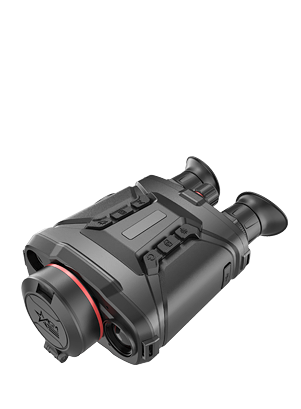
Thermal optics, also known as infrared (IR) imaging, have become a crucial technology in various fields, including military, law enforcement, firefighting, and medical diagnostics. These systems allow the visualization of heat signatures emitted by objects and enable us to see beyond what our eyes perceive. Behind the remarkable capabilities of thermal optics lie advanced materials and components specifically designed to detect and capture thermal radiation. In this article, we will explore the materials used in thermal optics and how they contribute to the functionality and performance of these cutting-edge devices.
Detector Materials:
The heart of a thermal imaging system is its detector, which absorbs and converts thermal radiation into an electrical signal. Two common types of detector materials used in thermal optics are:
a) InSb (Indium Antimonide): InSb detectors operate in the mid-wave infrared (MWIR) range and offer high sensitivity and excellent image quality. They are suitable for applications that require high-resolution imaging, such as surveillance, target acquisition, and scientific research.
b) HgCdTe (Mercury Cadmium Telluride): HgCdTe detectors cover a broad spectral range, including the short-wave infrared (SWIR) and long-wave infrared (LWIR) regions. They are known for their high sensitivity, low noise, and fast response times. HgCdTe detectors are widely used in military, aerospace, and industrial applications.
Optics Materials:
Optical components in thermal imaging systems, such as lenses and mirrors, are crucial for focusing and directing the infrared radiation onto the detector. The choice of materials for these components is essential to ensure optimum performance. Common materials used in thermal optics include:
a) Germanium (Ge): Germanium is widely used as an optical material in thermal imaging systems due to its excellent transmission properties in the infrared spectrum, particularly in the LWIR range. It offers low absorption and high refractive index, allowing for efficient capture and transmission of thermal radiation.
b) Zinc Selenide (ZnSe): ZnSe is another popular material used in thermal optics, especially for lenses. It has good transmission properties across the MWIR and LWIR ranges. ZnSe lenses are lightweight, robust, and offer low dispersion, making them suitable for a range of applications.
c) Chalcogenide Glasses: Chalcogenide glasses, such as arsenic sulfide (As2S3) or germanium-antimony-selenium (Ge-Sb-Se), are increasingly being used in thermal optics due to their high transparency in the LWIR region. These materials allow for the fabrication of compact, lightweight optics while maintaining good performance.
Housing and Enclosure Materials:
The housing and enclosure of a thermal imaging device play a crucial role in protecting sensitive components from external elements and maintaining operational performance. Common materials used for the construction of thermal optics housings include:
a) Aluminum: Aluminum is widely used in the construction of thermal imaging device housings due to its lightweight, excellent heat dissipation properties, and durability. It provides a good balance between strength and cost-effectiveness.
b) Magnesium: Magnesium alloys are also used for housing components due to their lightweight nature and good mechanical properties. Magnesium offers high strength-to-weight ratio and exhibits excellent thermal conductivity.
c) Polymers: Some thermal imaging devices utilize high-quality polymers for their housings. These polymers provide lightweight construction, good thermal insulation, and resistance to impact, chemicals, and environmental conditions.
Conclusion:
Thermal optics have revolutionized our ability to detect and visualize thermal radiation in numerous applications. Don’t forget to check our website www.agmglobalvision.com for more details. The materials used in the construction of thermal optics, including detector materials, optics materials, and housing materials, are carefully selected to optimize performance, sensitivity, and durability. The advancements in material science and engineering continue to enhance the capabilities of thermal imaging systems, paving the way for even more sophisticated and versatile applications in the future. As these technologies evolve, we can expect further innovations and the use of novel materials to push the boundaries of thermal optics.
